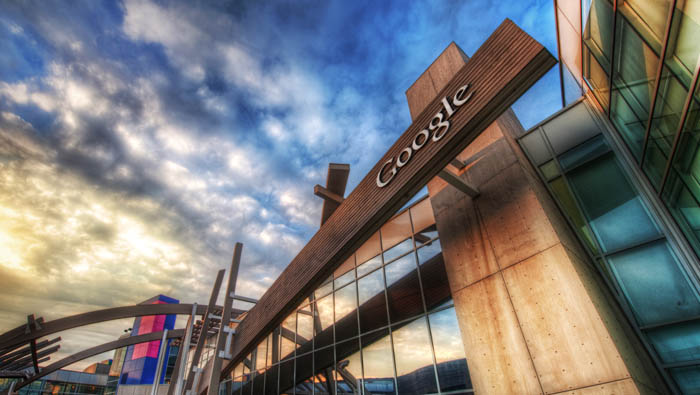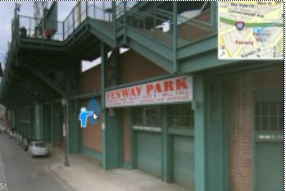Timeline: Google Street View scandal
We look back at the Google Street View scandal's history, right up to the ICO investigation's conclusion.


This week the UK's privacy watchdog concluded its investigation into the Google Street View scandal, when the search giant collected personal details during its mapping operation.
In this country it is the end of what Google will consider a forgettable saga, but the company still faces cases across the world.
But where did it all start? And where did it all go wrong? IT PRO takes a look back at the history of this intriguing scandal.
March 2009
The Street View service was launched across 25 cities in the UK, amid privacy concerns.
The Information Commissioner's Office (ICO) ruled it was not a threat to personal privacy and allowed it to continue. This would not be the first time the ICO would OK Google actions.
March 2010
Get the ITPro daily newsletter
Sign up today and you will receive a free copy of our Future Focus 2025 report - the leading guidance on AI, cybersecurity and other IT challenges as per 700+ senior executives
Google Street View went live across the UK, covering nearly all of the country's roads.
May 2010
The Street View case burst into life in May when a fleet of Google cars were found to be soaking up data from unprotected Wi-Fi networks in as many as 30 countries during its rounds in 2006.
Google admitted it had taken payload data but had done so by accident. It then insisted the data was not used by the company and said it had contacted the relevant authorities in each country.
Google then missed a deadline for submitting data to German regulators as the storm surrounding the case began to intensify.
June 2010
In an interview with the Financial Times, chief executive (CEO) Eric Schmidt admitted the firm had "screwed up" by taking the data. He said Google would be handing over data to German, French, Italian and Spanish regulators, after the UK's information commissioner said he was happy with Google's promise to delete the data as soon as was reasonably possible.
In June, the firm also tried to explain how the data had been taken. Google said an engineer had written a piece of code in 2006 for an "experimental Wi-Fi project." This was then unwittingly employed in software used by the organisation's mobile team when it was collecting "basic Wi-Fi network data" a year later. Basically, Google reiterated it was a mistake.
Privacy International came out and slammed Google for what happened, suggesting the company intentionally broke the law when collecting the Wi-Fi data.
In the same week Google released an independent report on the software involved in taking the information, showing Google had collected and stored payload data from unencrypted Wi-Fi networks. The search giant did not confirm what kind of data was taken, as it later would.
Connecticut attorney general Richard Blumenthal announced his office would lead the biggest investigation to date into the case, labeling the actions as a "deeply disturbing invasion of personal privacy."
Tom Brewster is currently an associate editor at Forbes and an award-winning journalist who covers cyber security, surveillance, and privacy. Starting his career at ITPro as a staff writer and working up to a senior staff writer role, Tom has been covering the tech industry for more than ten years and is considered one of the leading journalists in his specialism.
He is a proud alum of the University of Sheffield where he secured an undergraduate degree in English Literature before undertaking a certification from General Assembly in web development.
-
 Should AI PCs be part of your next hardware refresh?
Should AI PCs be part of your next hardware refresh?AI PCs are fast becoming a business staple and a surefire way to future-proof your business
By Bobby Hellard
-
 Westcon-Comstor and Vectra AI launch brace of new channel initiatives
Westcon-Comstor and Vectra AI launch brace of new channel initiativesNews Westcon-Comstor and Vectra AI have announced the launch of two new channel growth initiatives focused on the managed security service provider (MSSP) space and AWS Marketplace.
By Daniel Todd
-
 Google blames search “monopoly” on bug
Google blames search “monopoly” on bugNews Glitch was responsible for Yelp and TripAdvisor getting buried in search results, claims search engine giant
By Rene Millman
-
 Google's $1.1 bn purchase of Waze to be probed by FTC
Google's $1.1 bn purchase of Waze to be probed by FTCNews Investigation will determine whether Google simply purchased start-up to prevent rivals from acquiring it.
By Khidr Suleman
-
 FTC hits social network Path with record $800k fine
FTC hits social network Path with record $800k fineNews $800,000 penalty for data theft and underage sign-ups is highest ever given to app developer.
By Jane McCallion
-
 Google uncloaks refreshed search
Google uncloaks refreshed searchNews The internet giant starts rolling out its fresh search look to mark the start of 2012.
By Tom Brewster
-
 Yahoo ‘should abandon’ email scanning feature
Yahoo ‘should abandon’ email scanning featureNews A major UK privacy group calls on Yahoo to drop a recently introduced email scanning feature.
By Tom Brewster
-
 Microsoft hopes to avoid Google Street View nightmare
Microsoft hopes to avoid Google Street View nightmareNews The Redmond giant doesn't want to 'do a Google' as it collects data for location-based services.
By Tom Brewster
-
 Has the cookie crumbled?
Has the cookie crumbled?In-depth A new directive comes into force from the EU meaning significant changes in the way websites work with cookies. Simon Brew tries to make sense of it all...
By Simon Brew
-
 ICO fines 'coming this month'
ICO fines 'coming this month'News The ICO will flex its muscles this month by handing out a fine, commissioner Graham says.
By Tom Brewster